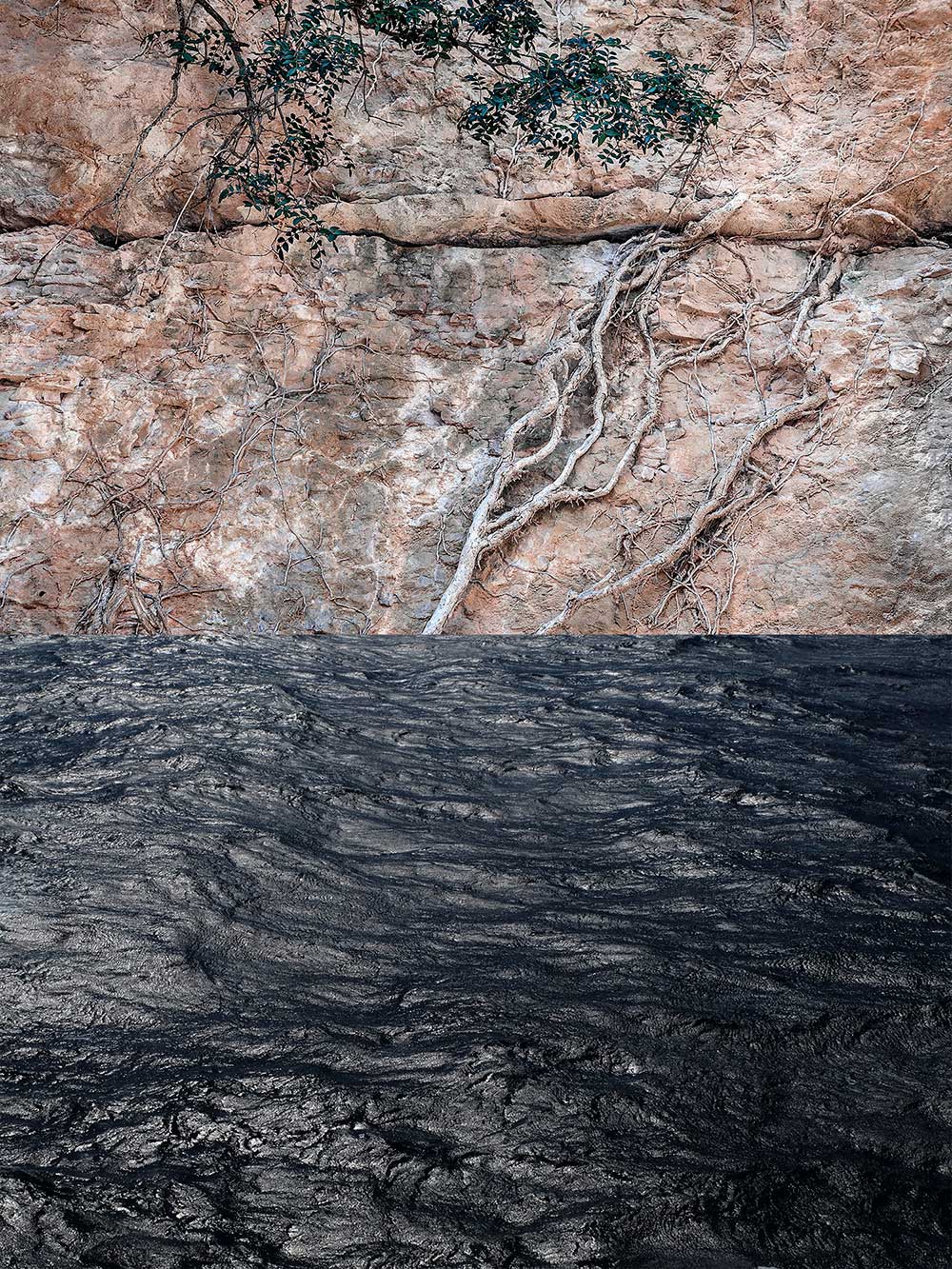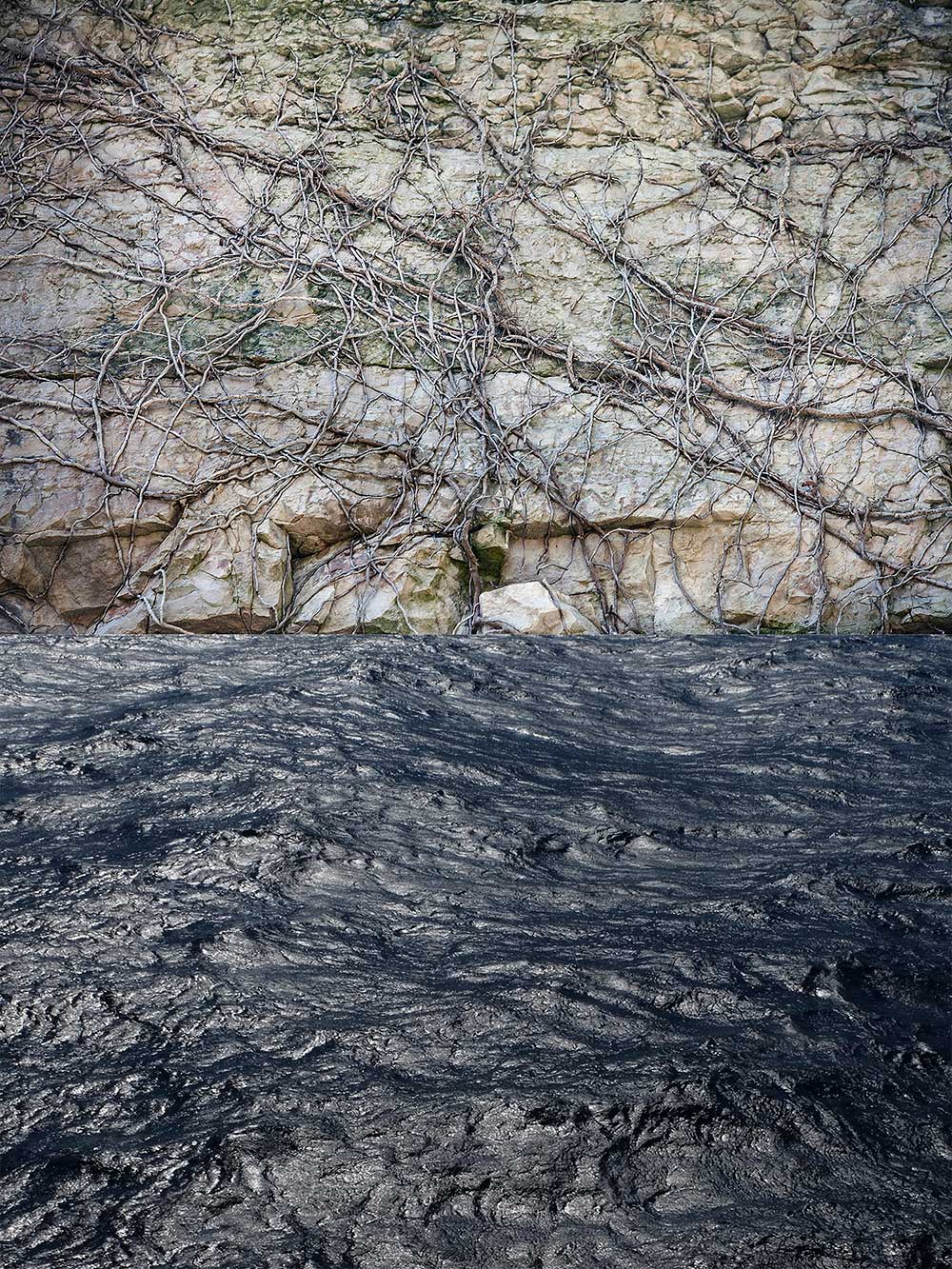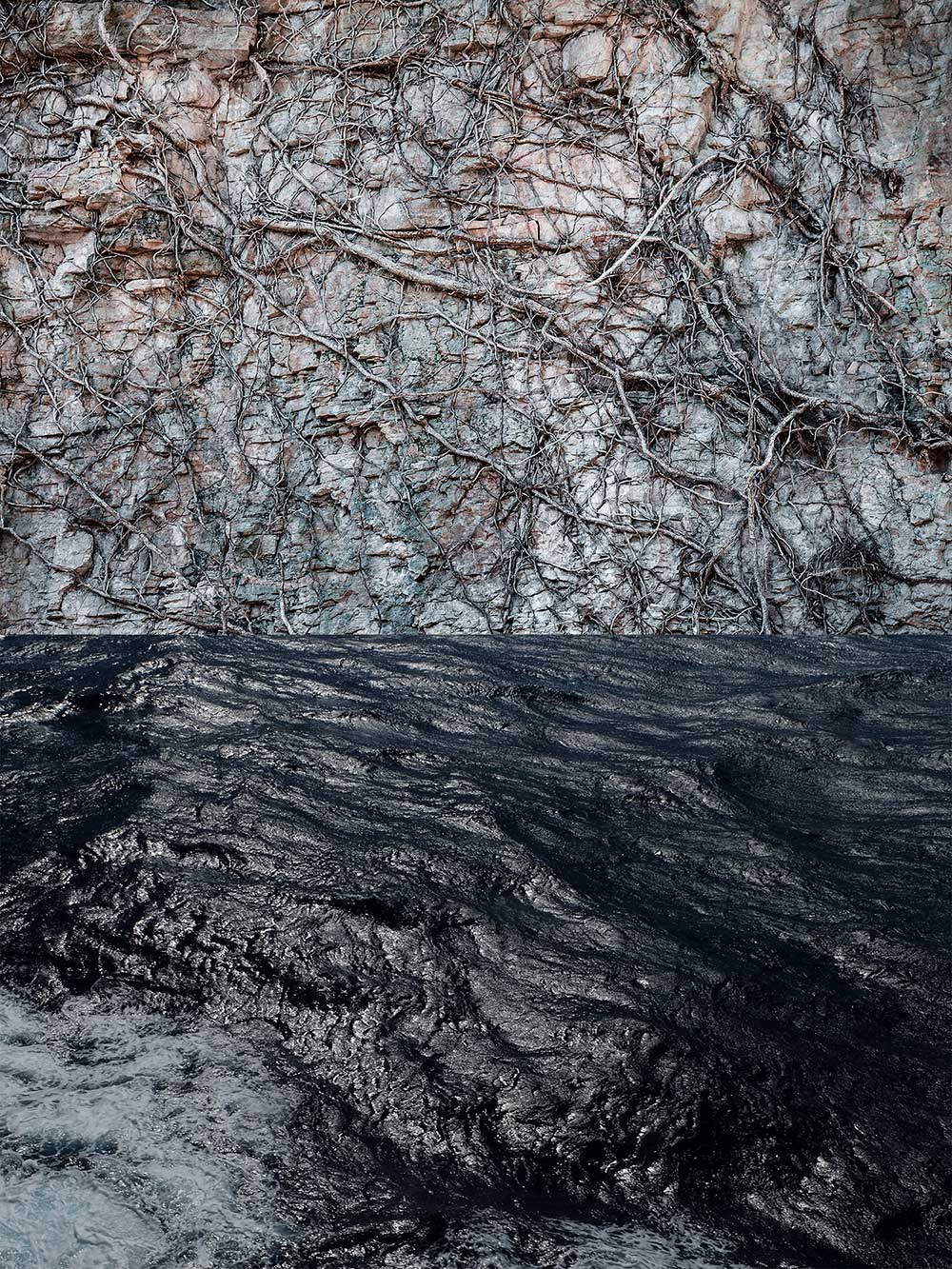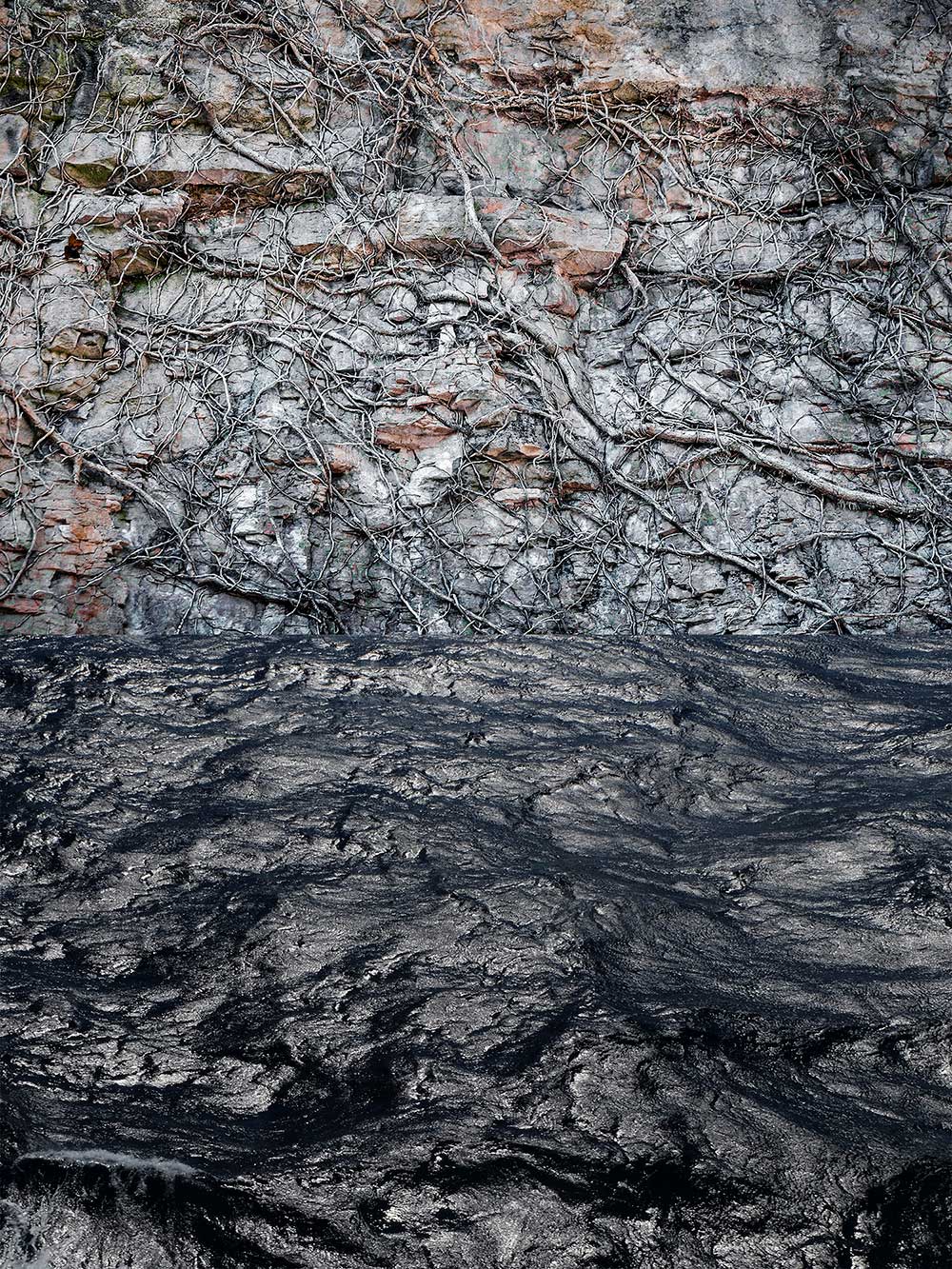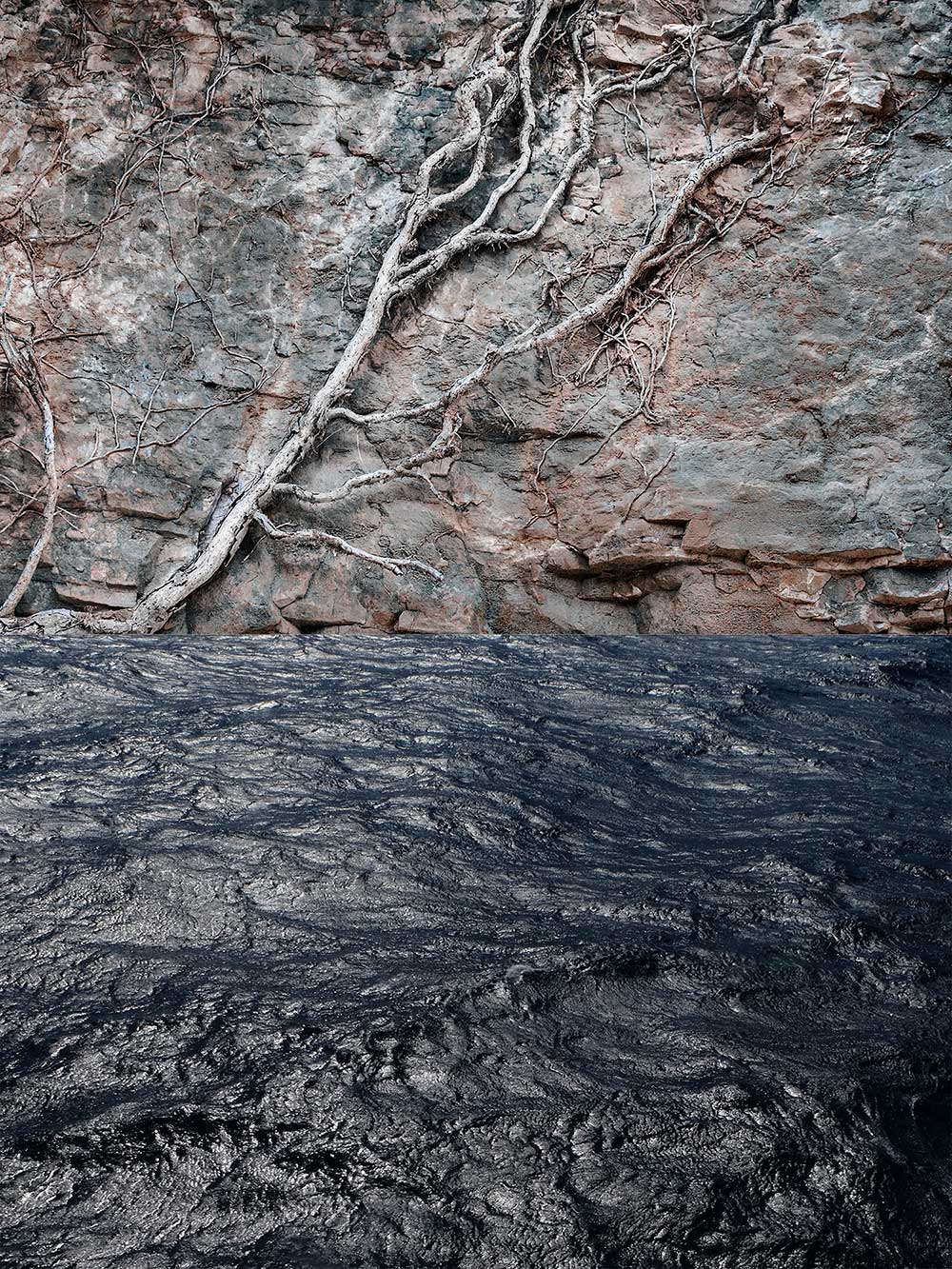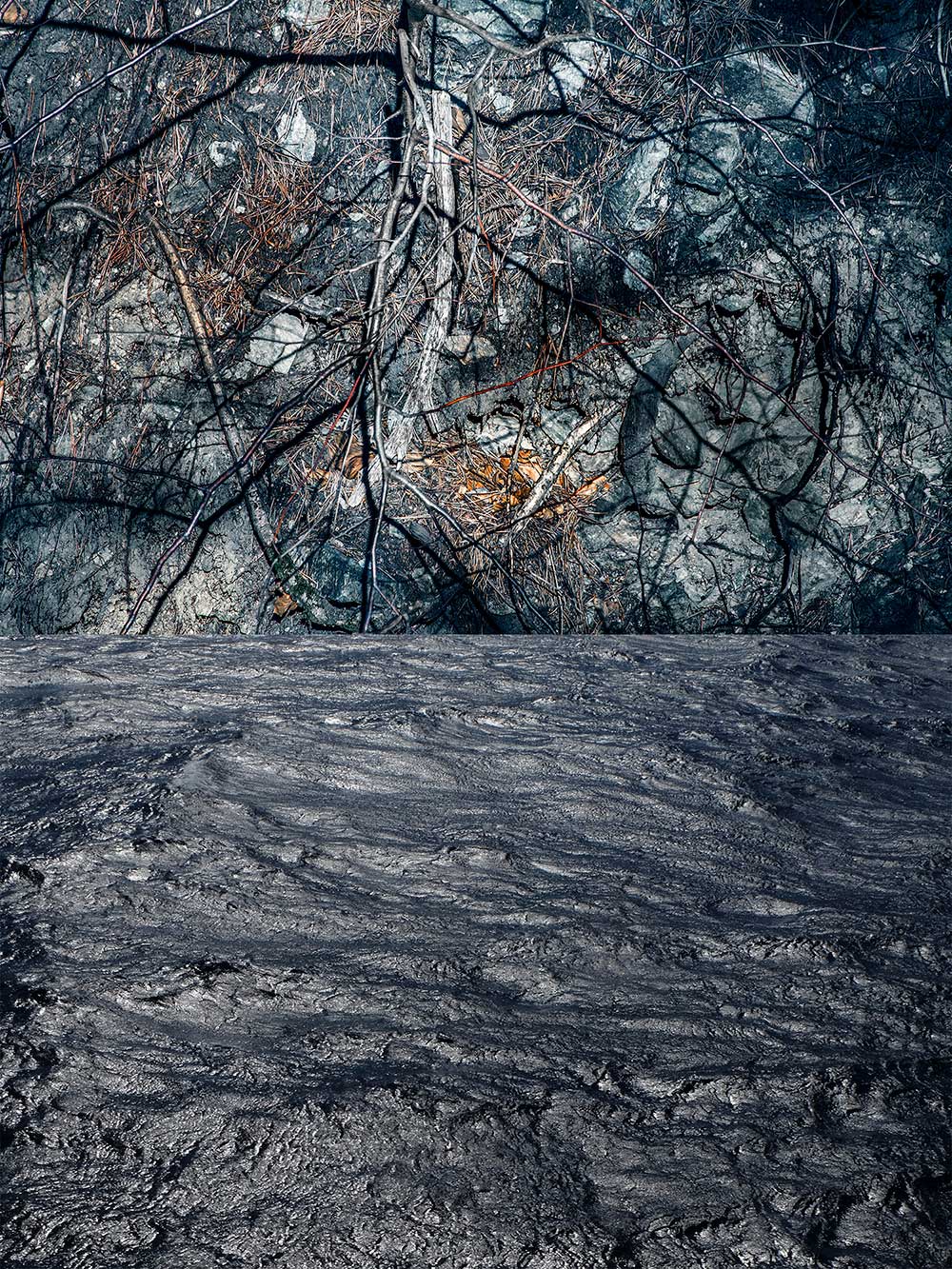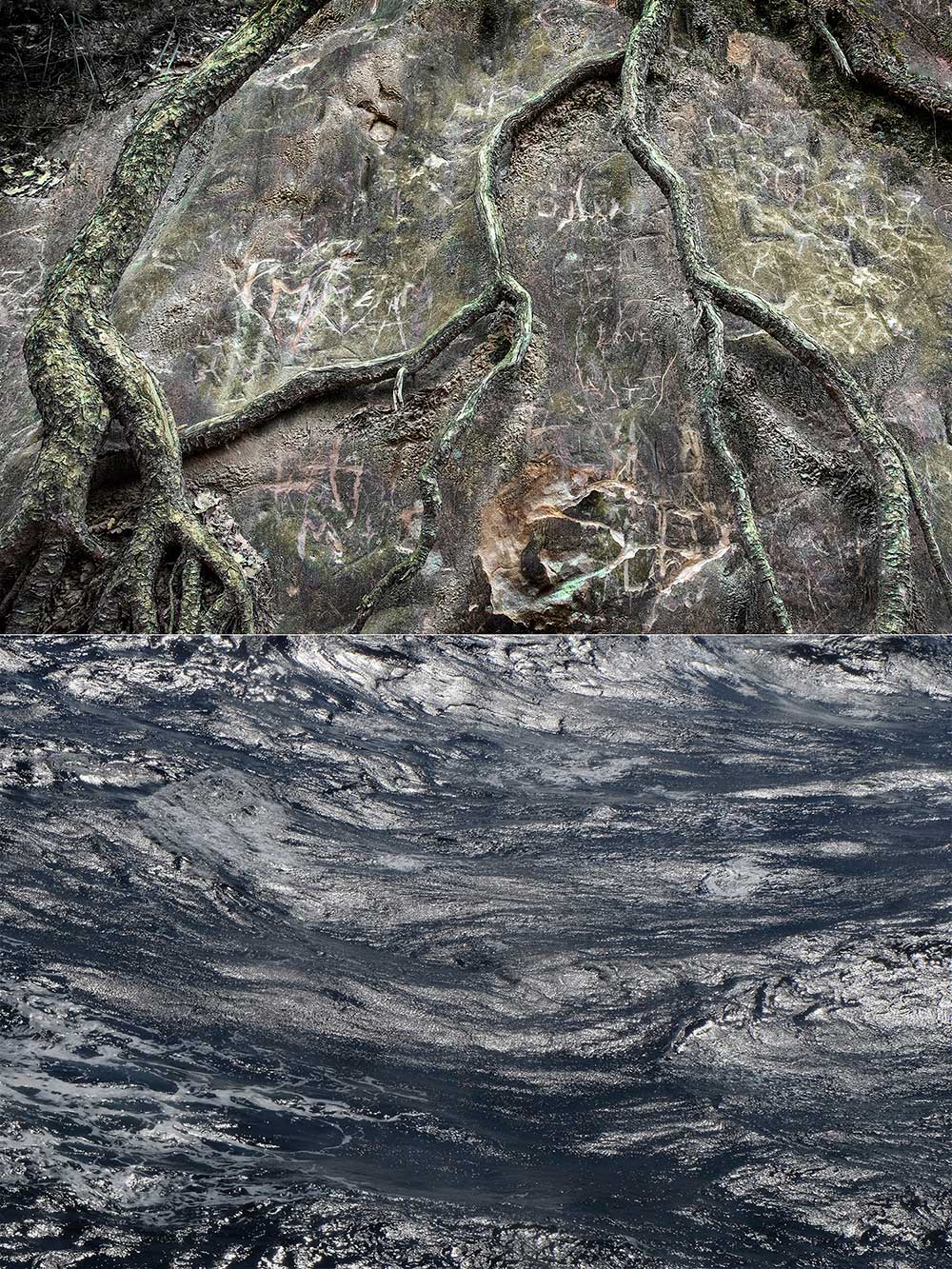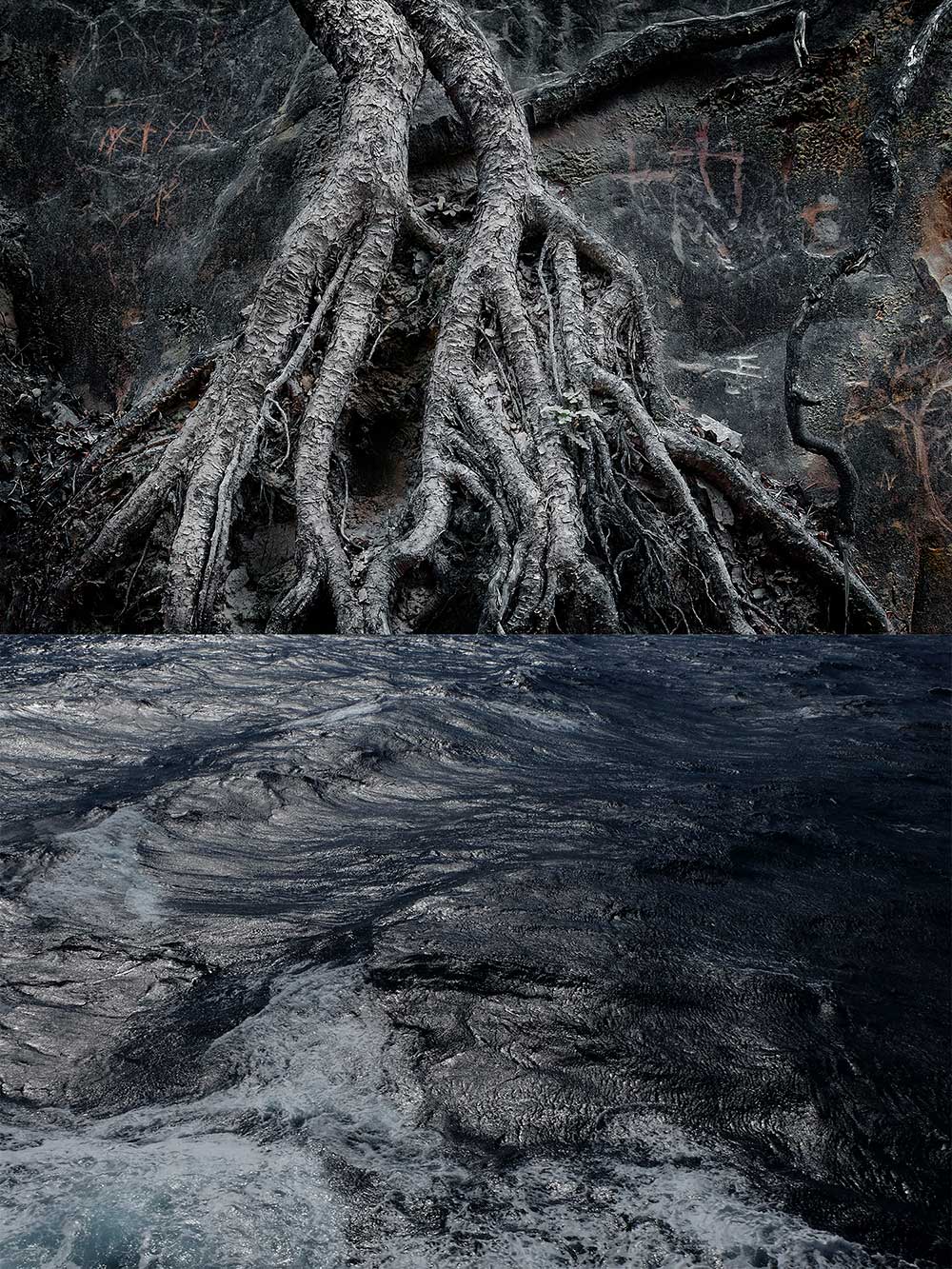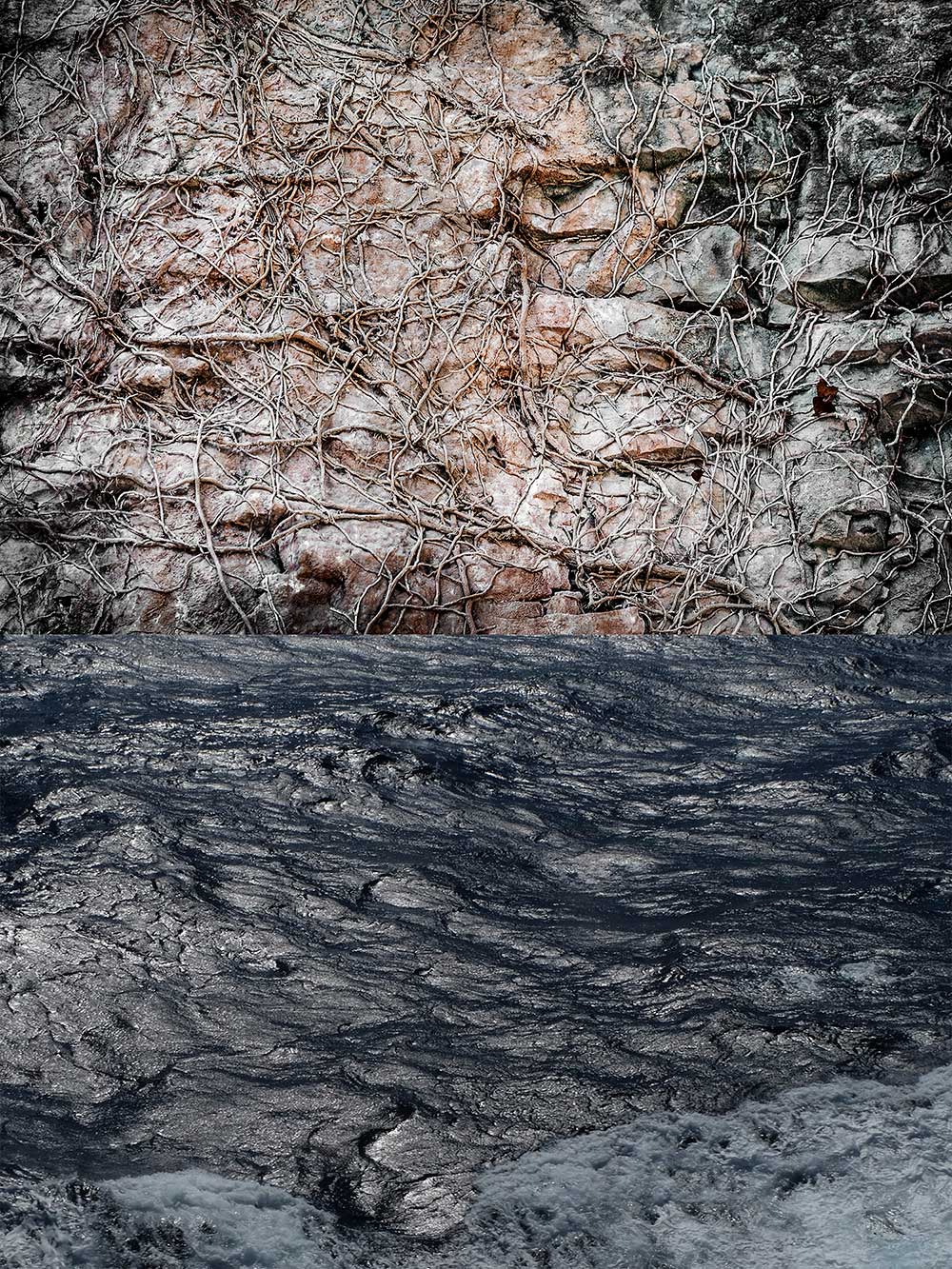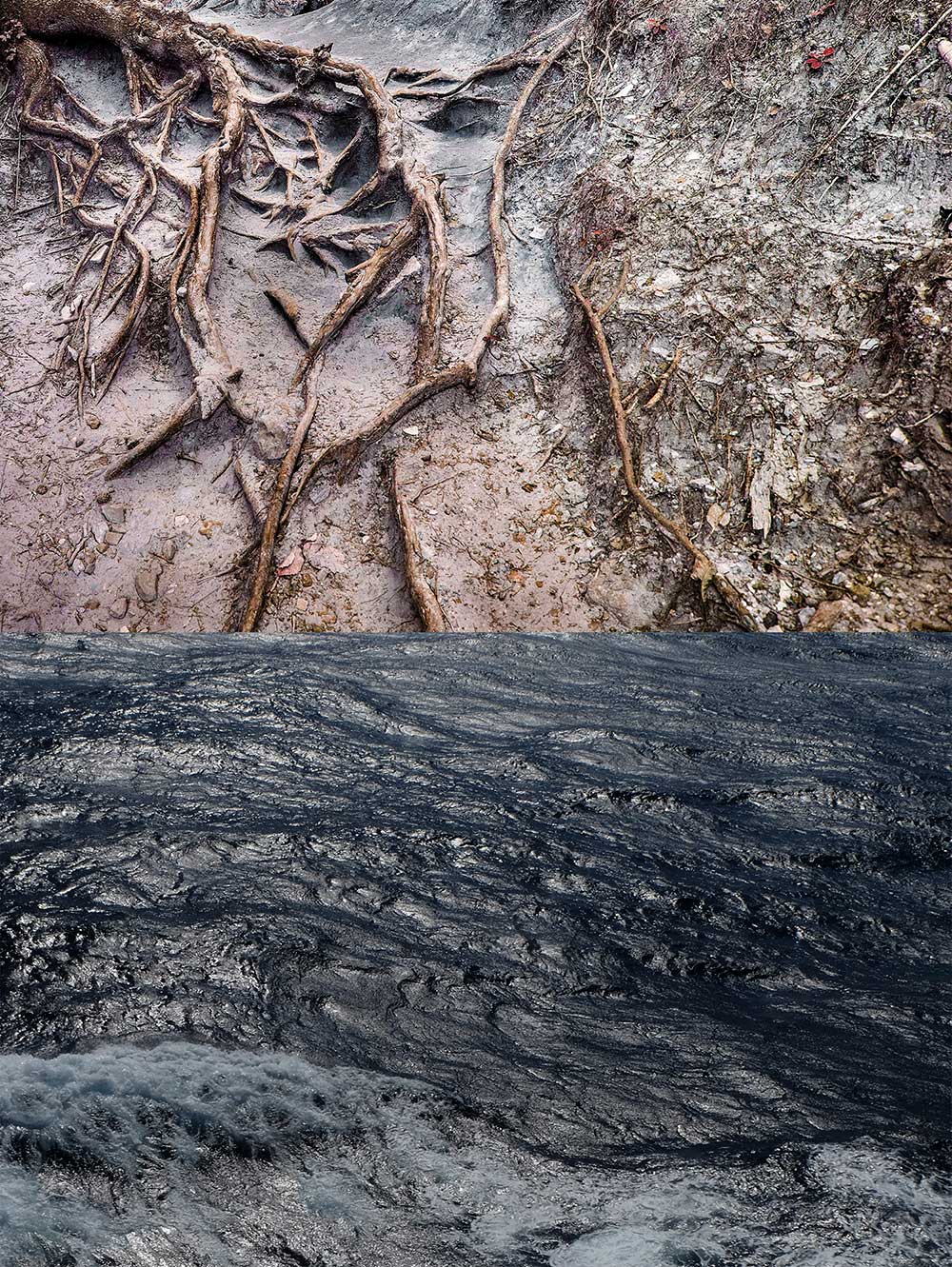This series presents a part of my continuing visual engagement with the natural and organic world. There are many reasons why taking photographs of trees and forests as art subjects is important for individuals and for society.
For the real change in environmental behavior, it is a must to learn to embrace complexity and to re-awaken a sensibility to patterns that connect everything. In general, I believe that photography can draw attention to environmental protection problems not only by depicting already caused pollution and resulting environmental disasters, but also with a more contemplative approach, with which we can face natural ecosystems more intimately and become aware of what is subject to destruction.
At least to my knowledge, there are not many attempts to represent roots as a photographed object. Mostly, roots structures can only be observed on the surface near the trees. They normally do not atract gaze. However, deep in the soil they represent ‘world wide web’ with the elements of intelligence which are most people completely unaware. Namely, trees have their own kind of intelligence which is hidden to human perception. According to scientific observations, trees communicate via complex underground webs as well as through the air.
During this project I was searching for the sites where a small part of such underground structures become visible and thus more fragile. I decided to combine photographs of roots with those of water in the form of dyptich to emphasize the connection between two essential elements of the natural environment. At some point on a cloudy day while I was standing on the deck of the ship, the water turned a dark grey, almost black colour. I thought that such a dark color fits well with the underground world of roots, where both elements are connected.
Nature can be perceived as a dynamism of visual forces where trees and water flows are not only symbols of the interconnectedness of life but represent the real interwoven web of primordial elements. In this context, the ter “nexus” refers to ecosystem elements being inextricably linked, in the sense that actions in one area commonly have impacts on the others.
In the context of this series, I can also rely on the words of philosopher Emanuele Coccia who wrote that plant coincide with the forms they invent: all forms are, for them, inflections of being, and not merely of doing and acting. For him, creating a form means to traverse it with all of one’s being, as one traverses ages or stages of one’s own existance.
About Gregor Radonjič
Gregor Radonjič lives and works in Maribor (Slovenia). He’s been creating and exhibiting photographs since the early 1990s. So far, his biography includes 33 solo exhibitions, over 60 group exhibitions abroad and in Slovenia, three published photobooks and several multimedia performances with other artists. He was selected twice in the programme of the Slovenian Month of the Photography Photonic Moments and the Festival of Photography Maribor and twice in the gallery selection for the Art Photo Budapest. In past two decades and half he has won several national photographic society awards and has been nominated as honorable mention photographer in several distinguished world contests (Artdoc Magazine, LensCulture, ND Awards, Lens Culture Critics Choice, PX3 and others). His main creative interest is visual exploration of landscapes and the quest of their character, sometimes hidden behind the usual physical experience of spaces. Gregor Radonjič graduated from Faculty of chemical engineering. The formal education helped him a lot in darkroom experimentation in pre-digital era of photography. Despite having no formal education on photography, he has been consistently and continuousely working on many photography projects (exhibitions, photobooks). [Official Website]



